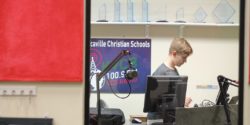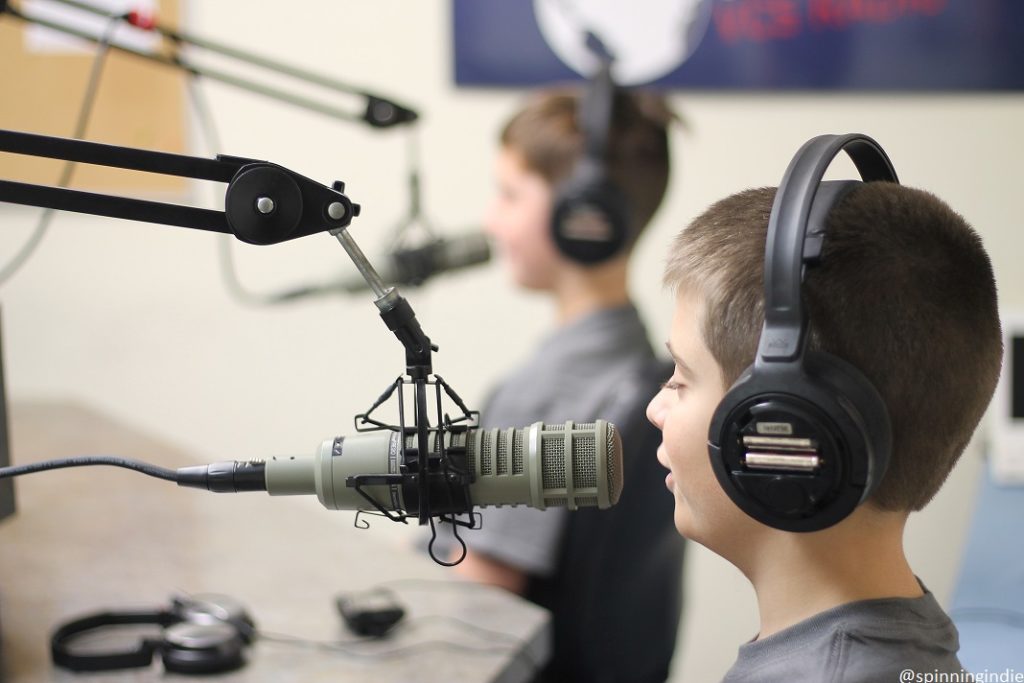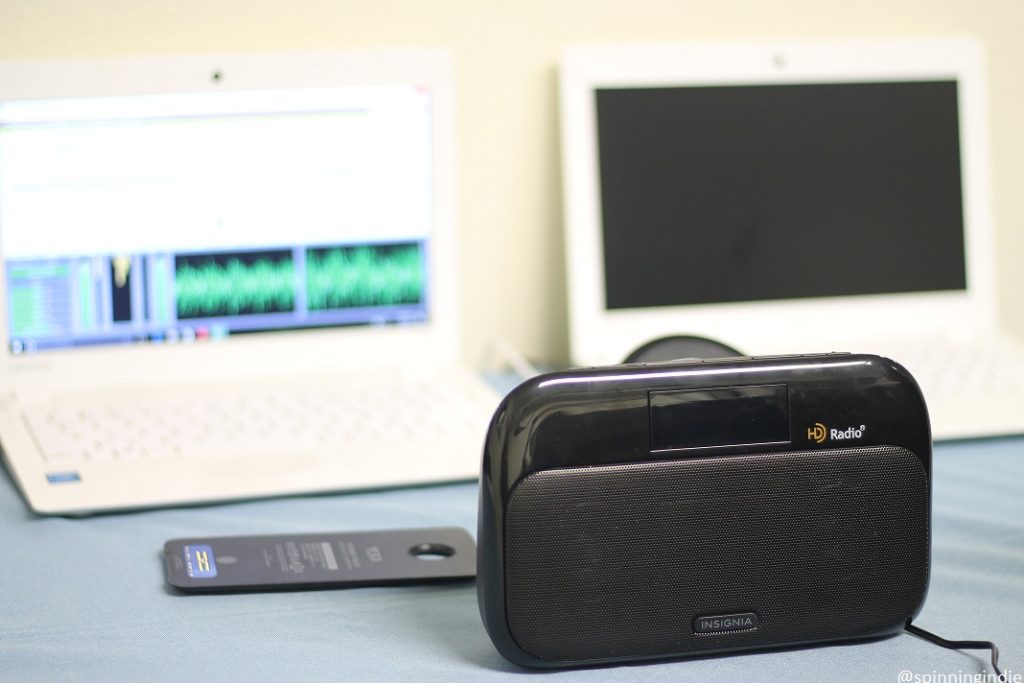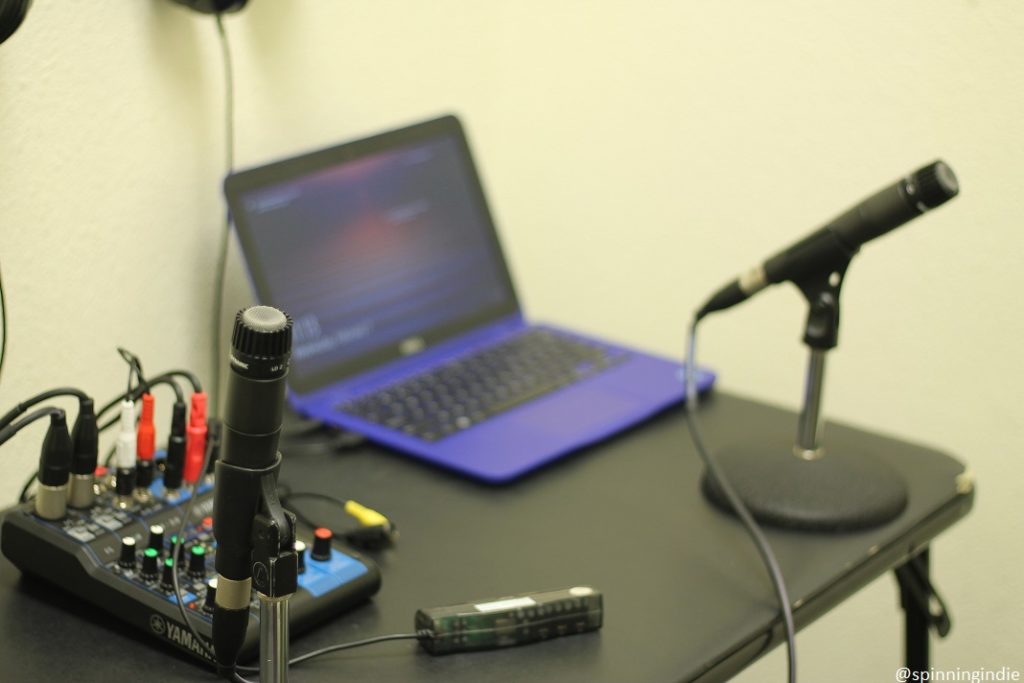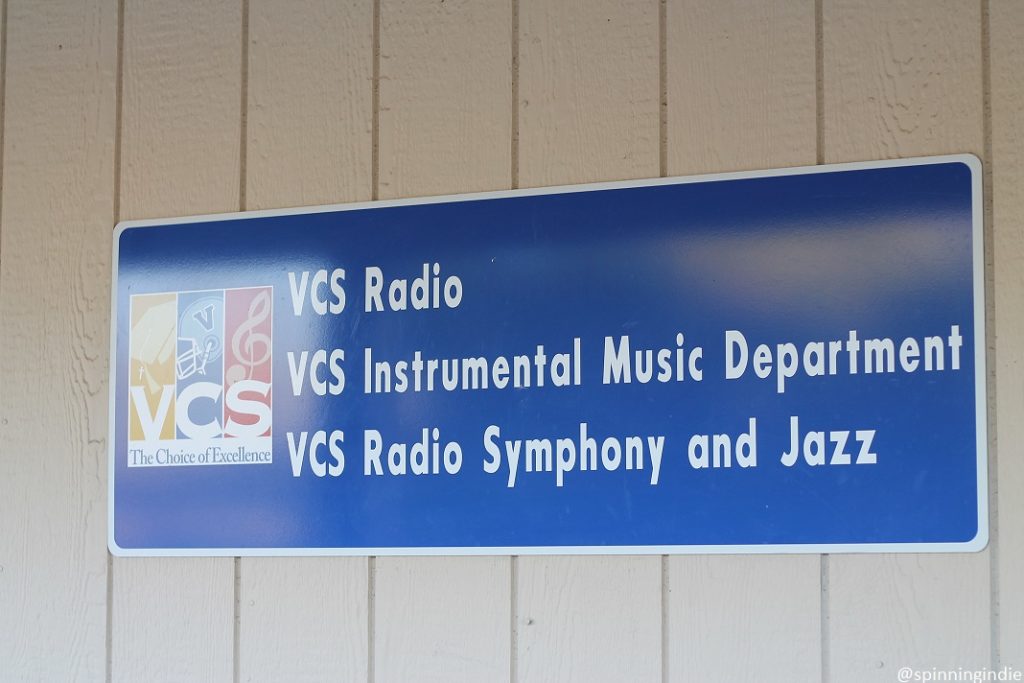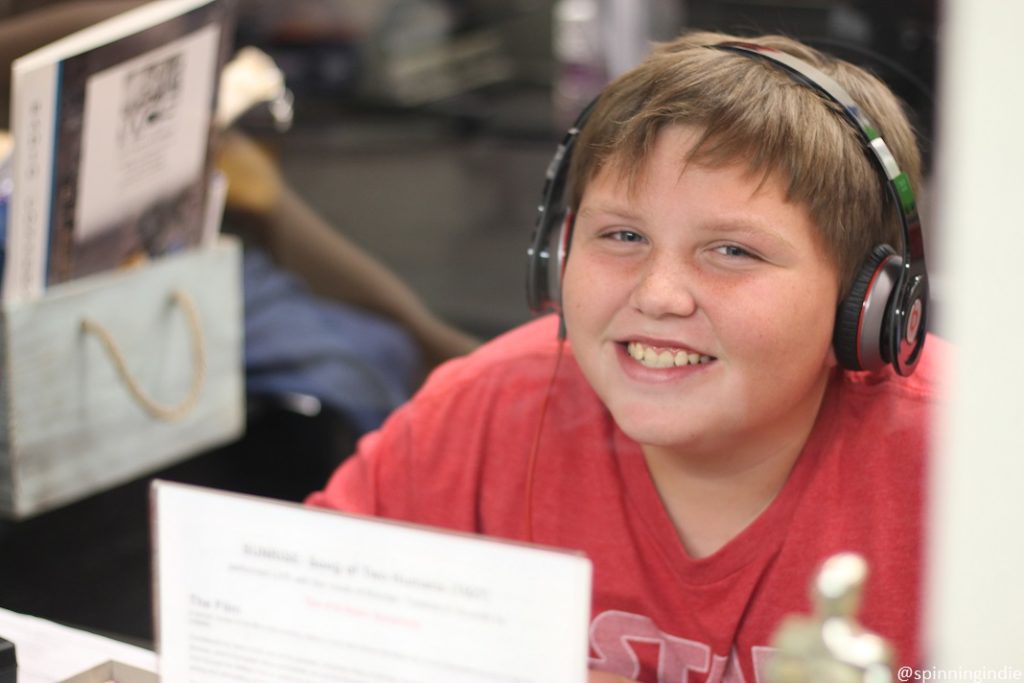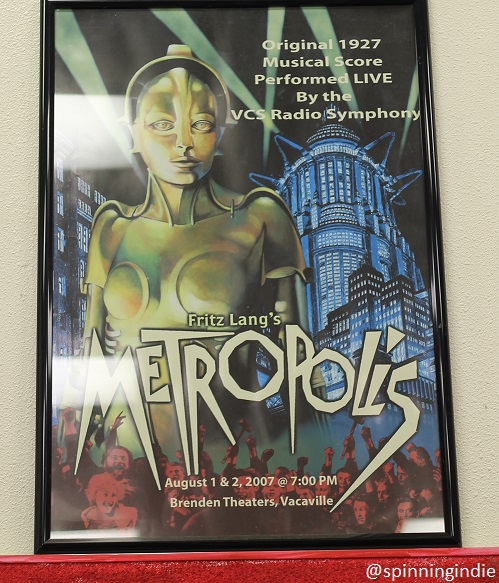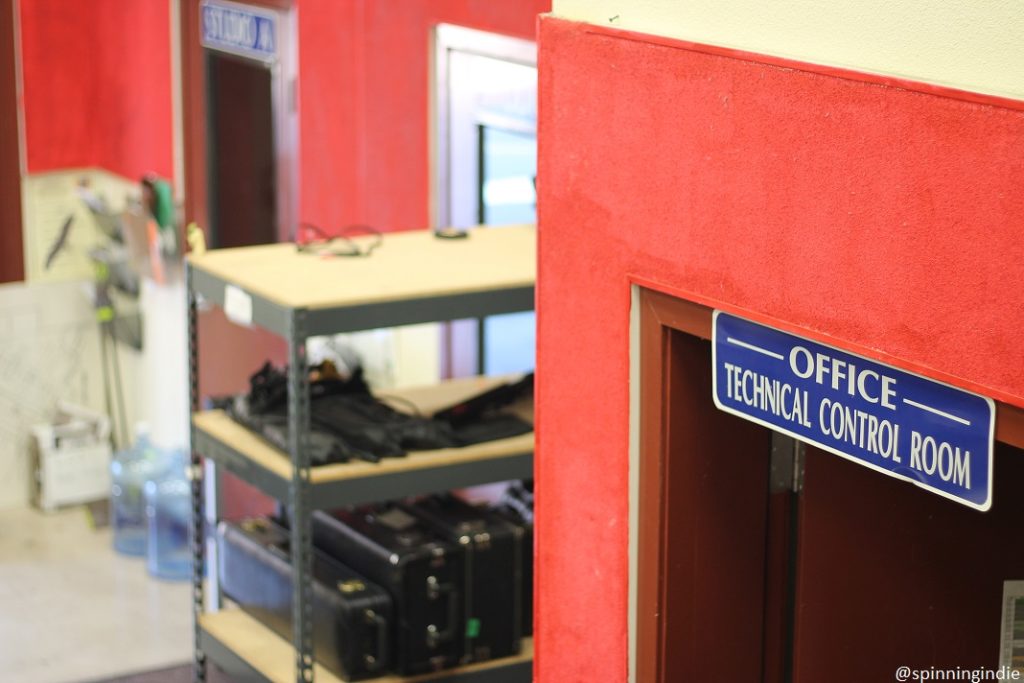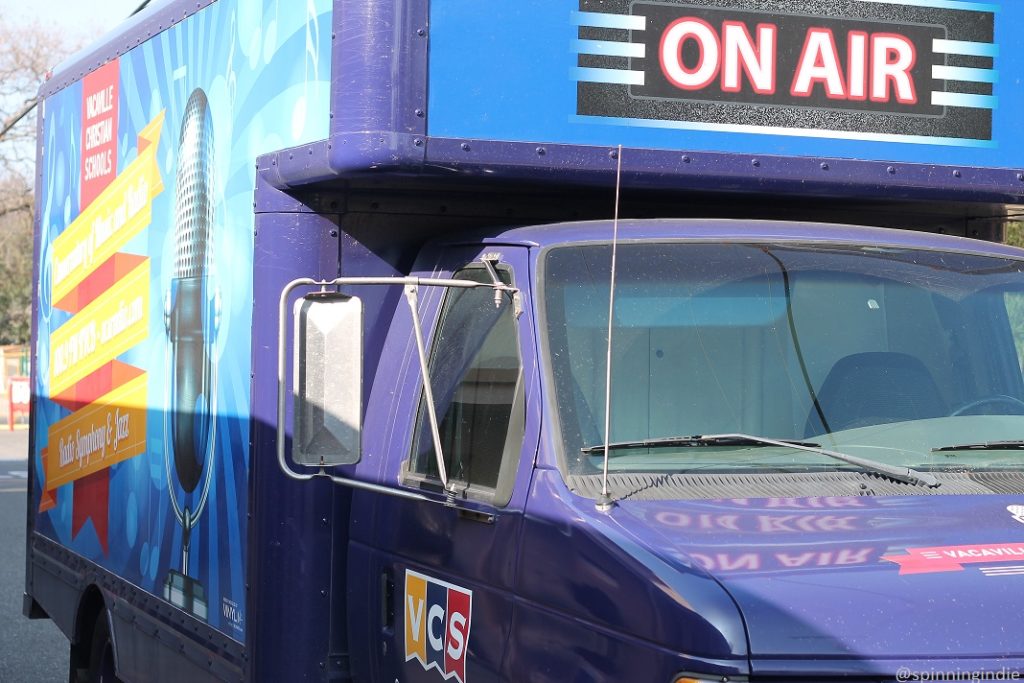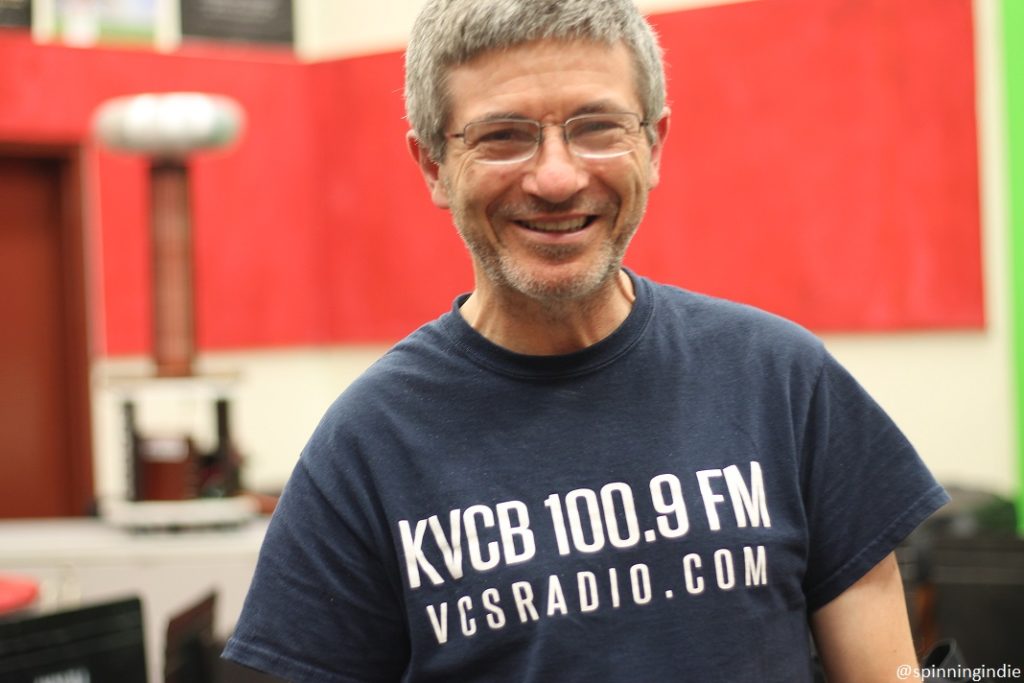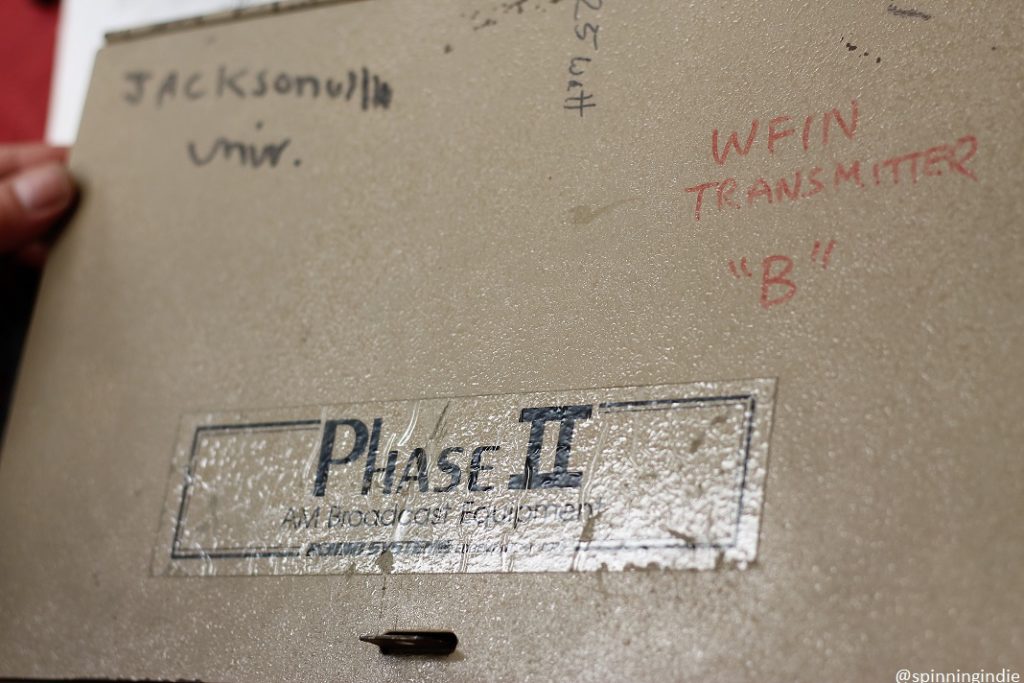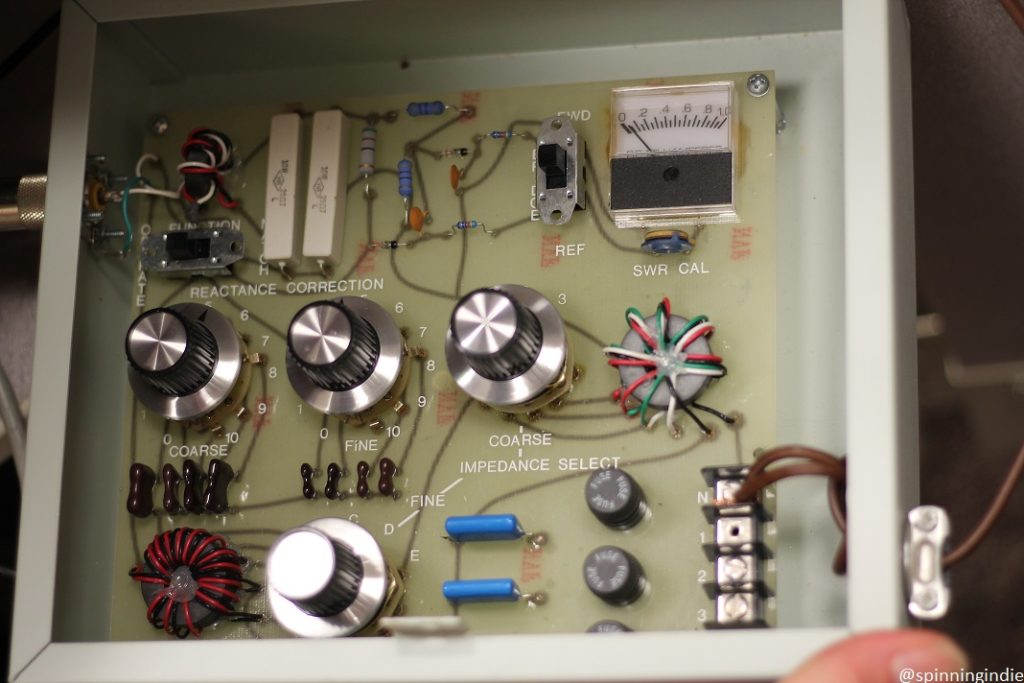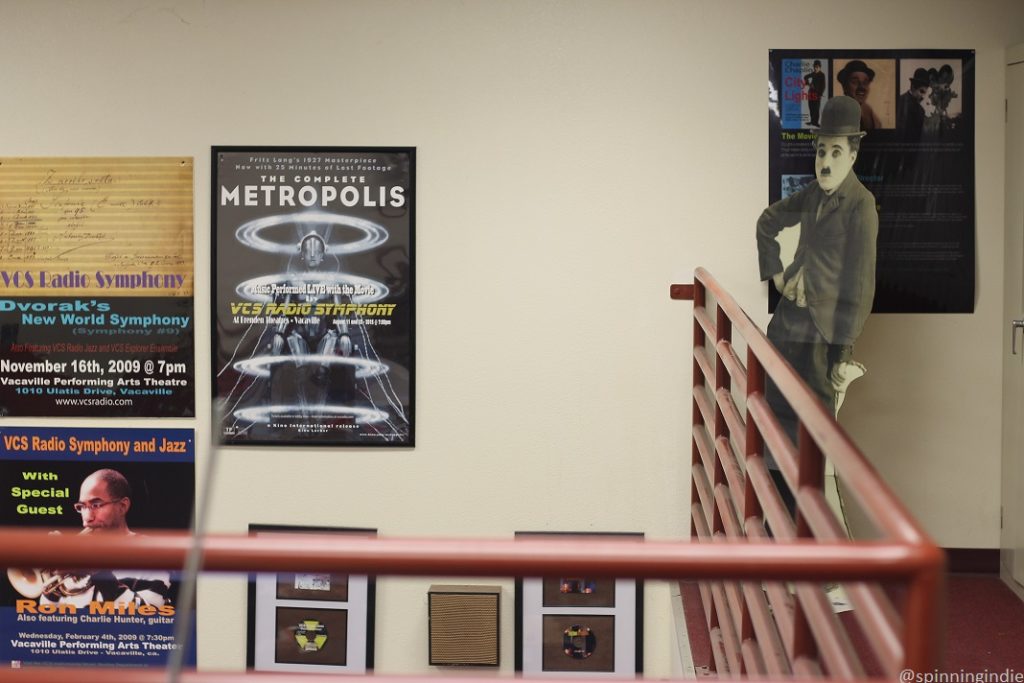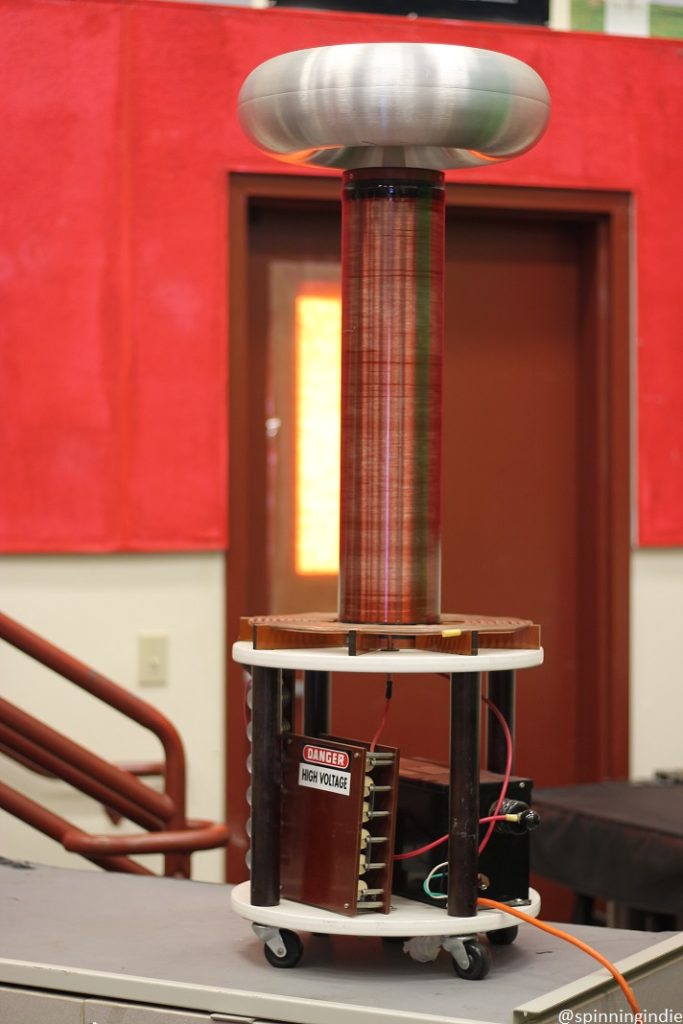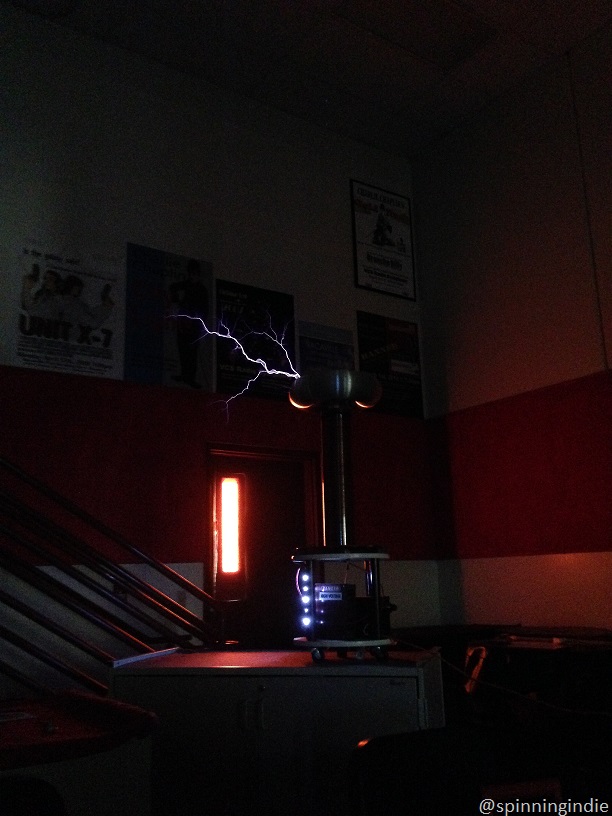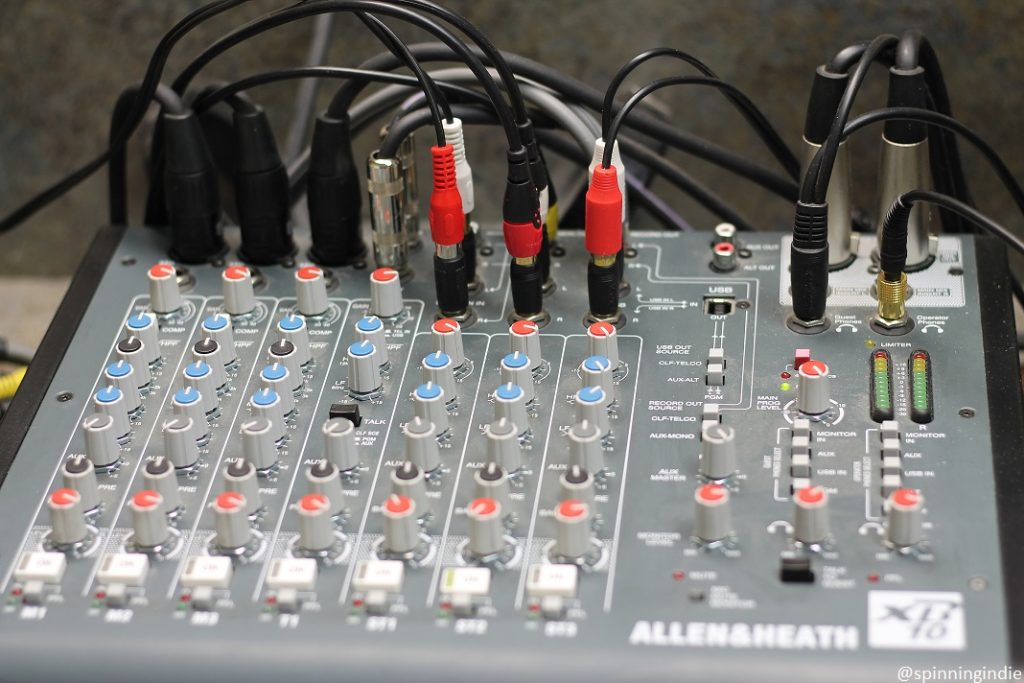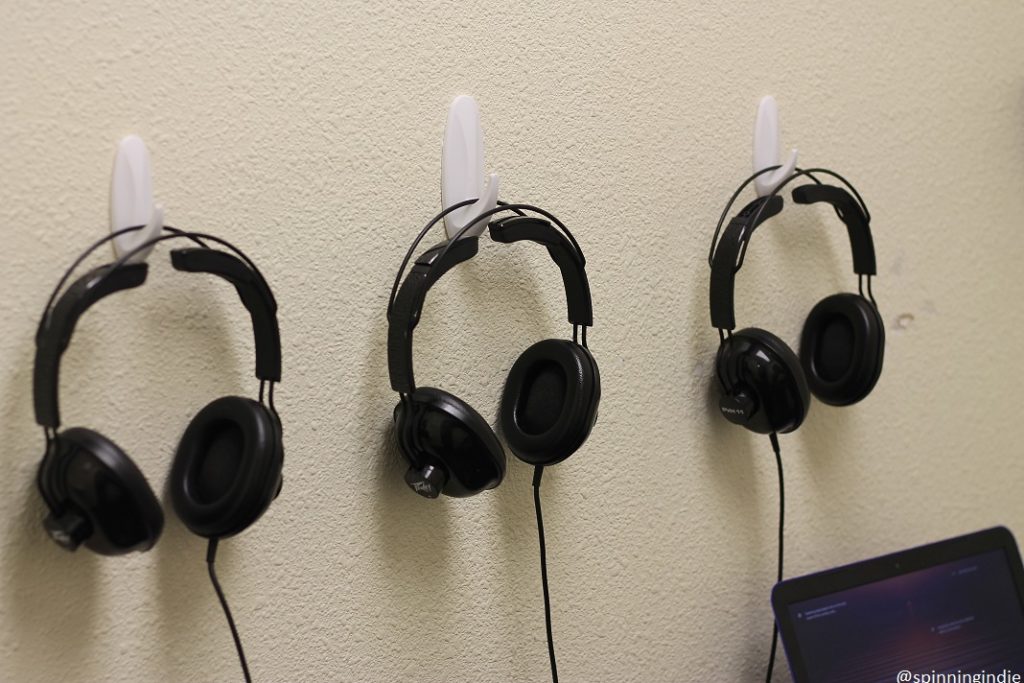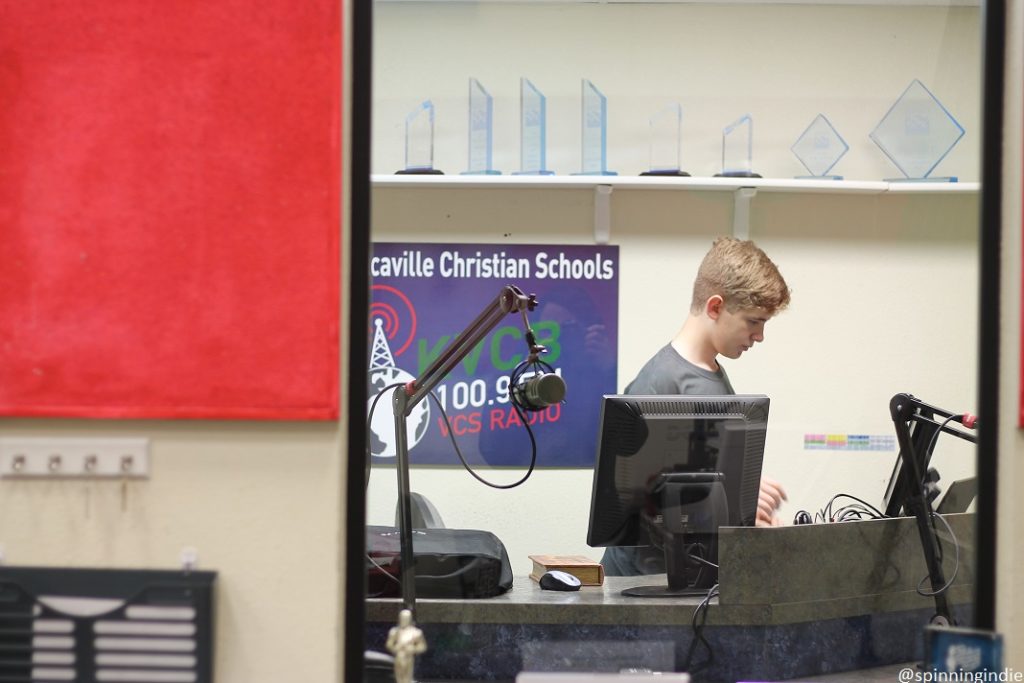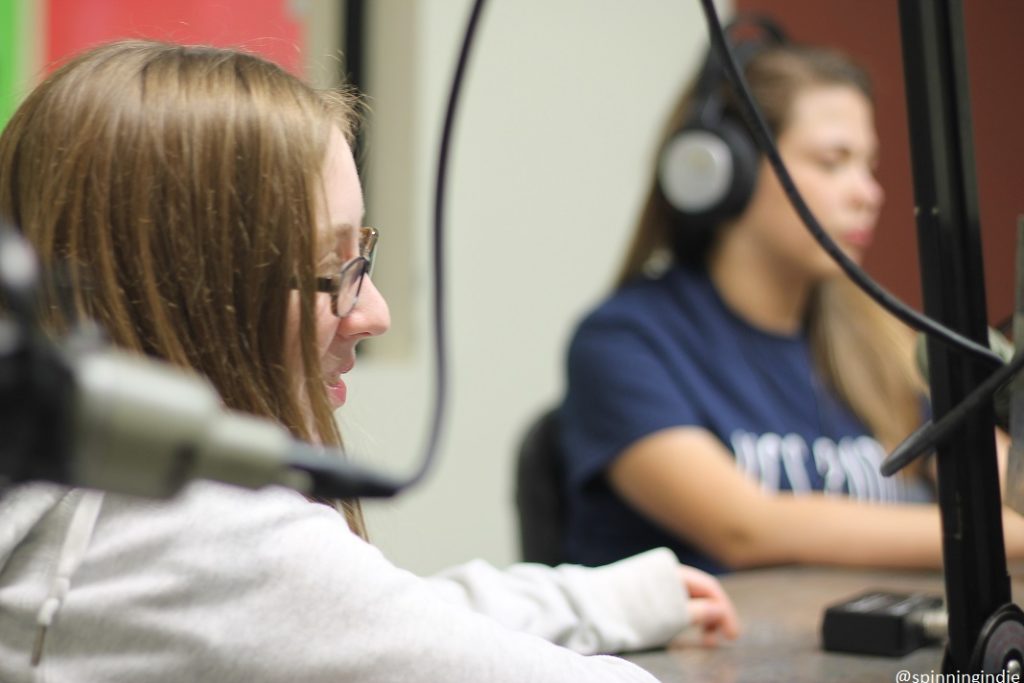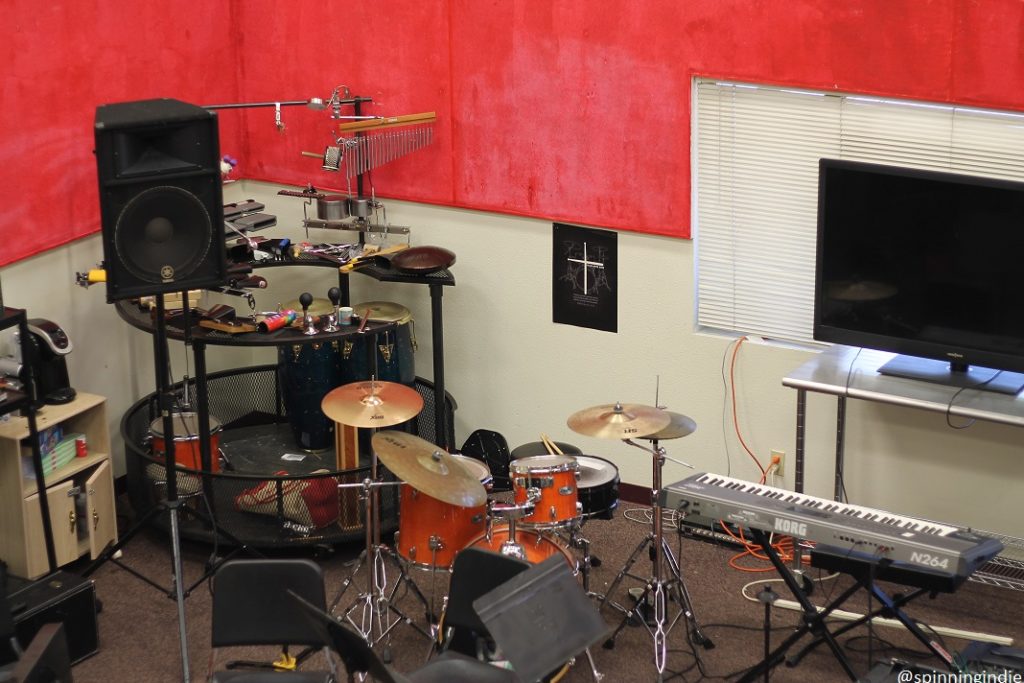It was with great anticipation that I arrived at VCS Radio at Vacaville Christian Schools in Vacaville, California for a full day of immersion into the highly unusual middle school/high school radio station. Having spoken with energetic station manager Ralph Martin previously for the Radio Survivor podcast, I expected that it would be a visit full of surprises. The trip did not disappoint. Not only was I interviewed by middle school broadcasters, but I also was treated to a spooky Tesla coil demonstration.
KVCB-LP (the “V-C-B” stands for Vacaville Christian Broadcasting) is a wonderful oddity, not only because of its youthful participants. Radio geeks will be amazed to learn that it operates as an HD low power FM station (at 100.9 FM), perhaps the only one of its kind. The topic of Radio Survivor Podcast #94 (“The High School Radio Station that Went HD”), this unique broadcast configuration allows KVCB to program 96 hours of material every day across its four HD channels.
The main channel, HD1 (also heard on the VCS Radio online stream) is where listeners can hear student programming, including live shows many afternoons and mornings. HD2 is focused on sound art and includes student compositions as well as pieces performed by the VCS Radio Symphony and VCS Radio Jazz Ensemble. Old time radio shows like The Shadow (one of my all-time favorites!) and Father Knows Best can be heard on the HD3 channel and HD4 plays school announcements. Some programming from the HD channels is interspersed within the main channel’s programming. Sound art and experimental music fans can hear “student produced and performed sound art, poetry and music” on Saturday nights at 7pm on the main channel, HD1, and online.
While we may typically think of school radio stations as being connected with broadcasting, multi-media or journalism programs; KVCB’s origin story has a musical bent. Martin, who is also Conservatory Education Director, is primarily a music teacher in the VCS Radio Conservatory. With all conservatory students involved with VCS radio, it means that around 200 kids participate directly and, as Martin points, out, “the entire school is involved in some form of broadcasting through our event coverage.”
I was excited to hear that younger students have an opportunity to get involved with VCS Radio. According to Martin, “…we started elementary student segments this last semester. All of our ‘top-of-the-hour’ legal ID’s are broadcast by 5th and 6th graders. Sometimes when you hear, ‘This is a test of the Emergency Alert System!’, it is often done live by a 3rd or 4th grader. The younger kids love doing the EAS tests. It’s an important job!”
With the music and radio programs intertwined, it means that KVCB is likely the only radio station in the United States with its own symphony orchestra. Some of the conservatory’s enviable projects are performing and composing film scores to numerous silent films, including early works by Thomas Edison. The conservatory’s website points out that the “VCS Radio Symphony has achieved international recognition for its work in restoring, preserving and recreating performances of classic cinematic musical scores – especially from the silent film era. The ensemble was the first in the United State to premiere the restored Fritz Lang’s Metropolis with its original score in 2007, prompting the mayor of Vacaville to proclaim a day in their honor.”
Martin first started up a radio station at VCS as a tool for his music students to share their opinions about music; for that reason, VCS Radio participants are typically music students and musicians who might be taking music classes on one day and doing radio the next. Others are welcome to join in after school. Lines blur between the radio and the music programs, particularly since the radio studios are housed along the edges of the music room, with several of them doubling as music practice rooms.
When I approached VCS Radio’s headquarters, it was impossible to miss the music department’s colorful, radio-themed truck parked out front. The bright blue vehicle is adorned with an “On-Air” sign, microphone graphic, and branding for both the radio station and the school orchestra/jazz band. A reconditioned U-Haul truck, the spiffed up vehicle is now used for transporting music equipment to gigs.
Although Martin would say that music came first at VCS, the truth is that he has a long history as a radio buff. He’s been at Vacaville Christian Schools for 33 years and in his radio role, he’s been the mastermind of some intriguing projects, including a few “secret” stations and broadcasts, including hidden Morse code messages over KVCB.
Over email, Martin told me VCS Radio’s back story, explaining,
VCS Radio started around 1997 (or close) as a classroom exercise for my music students. They were mock radio segments where I would have my students select a piece of music and describe what they like or dislike about it. They would provide a little information about the artist and reflect on how their selection moved them. From there it morphed into event broadcasting online and on a part-15 free radiate system that I had set up on campus.
While doing the unlicensed part 15 broadcasts, Martin experimented with carrier current, using it to broadcast to the music building. He still utilizes AM carrier current today to broadcast a message to his students for a final exam project in which they are required to build a crystal radio. Martin poses a question to his students that can only be answered by listening to the mysterious AM broadcast. “I give my students an empty toilet paper roll, a safety pin, a dulled razor blade, a broken pencil, some copper wire, and a wood or plastic block. Their job is to design and build a device to decode the broadcast and answer the question. Essentially, they’re building a ‘foxhole’ crystal radio. It works great and shows them a bit about early wireless technology,” Martin relayed.
As far as the Morse Code broadcast, it’s something that Martin has rigged up with the FSK identifier function on KVCB’s transmitter. Martin pointed out, “To hear it, you would need equipment capable of detecting the code. I suppose if, in the unlikely event, we ever had any dead air, and a standard radio receiver was close enough to our transmitter, and you turned up the volume and listened really, really hard, you’d hear artifacts of the mysterious broadcast. And, of course, if you knew morse code… well, there you go! :)”
While visiting radio stations, I always have an eye out for interesting artifacts. There’s a lot to see in the VCS music room/radio station, including instruments galore, countless movie and event posters, a cardboard Charlie Chaplin cut-out, a tiny Yoda, vintage radio equipment, and perhaps the most exciting item that I’ve ever seen: a Tesla coil. During our lunch break, Martin asked if I’d like to see it in action. How could I refuse?
The dramatic Tesla coil, which Martin built with the help of a special effects-focused Tesla coil expert, serves as another instrument of sorts for the music students and has appeared on stage during performances to heighten the drama and add “scary effects.” Martin explained that most recently he challenged his jazz band to create a work representing a plane flying through a storm. During our conversation in February, he told me that he anticipated that the imminent performance would likely use the Tesla coil to represent lightning.
Creativity is held in high regard at VCS Radio and I was glad to catch some student-crafted compositions on the station’s HD2 channel as I sat in my car in the school parking lot. One jazz piece turned out to have been the work of a student who I later met at the radio station; another was a funky beat poetry-infused jazz number. I also heard some interesting samples and bits of an interview where girls asked boys their thoughts about girls. As far as the “sound art”-oriented HD 2 channel, which often will feature nature sounds as well, Martin revealed that some “people like to tune in and just sleep” to it.
In addition to music programming, VCS Radio has conducted numerous live broadcasts (sports, meetings, etc.) and even created its own science fiction radio drama series (Unit X-7), with performances done in the style of a live radio play, in front of an audience.
On the day of my visit, I was a fly on the wall during a few live middle school shows. Beforehand, Martin joked with me, “Some people are brave enough to visit while 6th and 7th graders are running a radio station!” For me, this was a huge bonus, as I haven’t seen a middle school radio program before. The team of boys (several shared hosting and engineering duties during each segment) selected music to play, shared light banter, and even invited me to be interviewed on-air.
Later in the day, I witnessed KVCB’s National High School Radio Network broadcast. On Wednesdays during the school year, different high school radio stations take turns broadcasting on fellow network stations across the country. Martin was the instigator behind the High School Radio Network, which now has around 25 participating stations. A crew of girls from VCS Radio produced that week’s episode, selecting music, fielding phone calls, and chatting on-air. As with the middle school broadcast, I was asked to make a cameo appearance, chiming in about my work as well as answering some pop culture questions.
While the network shows will pause during the summer, VCS Radio will continue to broadcast online and to local Vacaville listeners. As Martin wraps up the academic year this week, he’s already looking ahead to the station’s summer schedule. “With our 4 HD channels, we’re responsible for 96 hours of programming each day, 365 days a year. The station is open all summer long. Our students can broadcast by reserving time in one of our studios,” he shared.
Thanks to Ralph Martin and everyone at VCS Radio for the inspiring visit. This is my 144th radio station tour report, with more on the way. My most recent field trips are located on Radio Survivor and a full list of all my station tour reports is archived on Spinning Indie.

